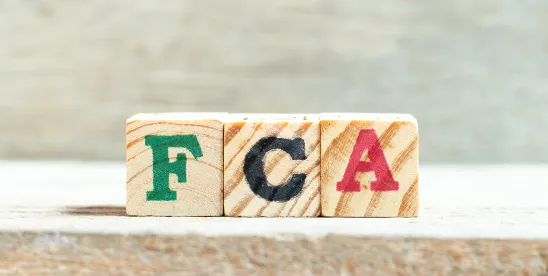It’s déjà vu all over again.”[1] Attorney General Pam Bondi has not surprisingly renewed the prior Trump administration’s prohibition on the use of sub-regulatory guidance, potentially altering the landscape for False Claims Act cases pursued during the second Trump administration.
This development is the latest in a series of efforts to allow reliance on government guidance — or not. To catch everyone up:
- On February 5, 2025, Bondi issued a memorandum, titled “Reinstating the Prohibition on Improper Guidance Documents” (the “Bondi Memo”).
- The Bondi Memo expressly withdrew prior Attorney General Merrick Garland’s own July 1, 2021. memorandum, titled “Issuance and Use of Guidance Documents by the Department of Justice” (the Garland Memo).
- The Bondi Memo also tacitly revived prior Attorney General Jeff Sessions’ November 2017 memorandum, titled “Prohibition on Improper Guidance Documents” (the “Sessions Memo”), and a January 2018 memorandum from Associate Attorney General Rachel Brand, titled “Limiting Use of Agency Guidance Documents in Affirmative Civil Enforcement Cases” (the “Brand Memo”).[2]
In this latest Bondi Memo, the DOJ states, “[g]uidance documents” that have not undergone “the rule making process established by law yet purport to have a direct effect on the rights and obligations of private parties” are not lawful regulatory authority. This recission is to “restore the Department to the lawful use of regulatory authority” and advance DOJ’s “compliance with its mission and duty to uphold the law.” Accordingly, DOJ attorneys likely will not be permitted to rely on agency guidance to establish a violation of law or a false statement in a False Claims Act case.
DOJ’s reliance on agency guidance already was in doubt after the Supreme Court’s 2024 decision in Loper Bright, which reworked how courts should view agency guidance. The Garland Memo had asserted that DOJ attorneys “may rely on relevant guidance documents . . . including when a guidance document may be entitled to deference or otherwise carry persuasive wait with respect to the meaning of applicable legal requirements.” Loper Bright, however, made clear that agencies are not entitled to deference unless deference is expressly provided for by statute. And even prior to Loper Bright, the Supreme Court, in Kisor v. Wilkie, confirmed agency guidance “never forms the basis for an enforcement action’’ because such documents cannot “impose any legal binding requirements on private parties.” 588 U.S. 558, 584 (2019) (internal citations omitted). The Bondi Memo is yet another attack on what may be considered agency overreach.
Because the Garland Memo itself rescinded two memoranda from the previous Trump administration DOJ officials, these prior Sessions and Brand memoranda tacitly are restored by the recission of the Garland Memo. Both memoranda restricted DOJ’s use of sub-regulatory guidance and prevented DOJ from using guidance documents to “determine compliance with existing regulatory and statutory requirements.” See Sessions Memo & Brand Memo (prohibiting use of “noncompliance with guidance documents as a basis for proving violations of applicable law.”)
What presently is murky is whether DOJ still may use guidance documents to establish scienter. The Brand Memo had provided that “some guidance documents simply explain or paraphrase legal mandates from existing statutes or regulations, and the Department may use evidence that a party read such a guidance document to help prove that the party had the requisite knowledge of the mandate.” It has been a longstanding DOJ practice to use guidance documents to show scienter, and the practice was permitted under the first Trump administration and the perhaps now-restored Brand Memo. The Bondi Memo does not directly address the use of agency guidance to show scienter, nor does it announce any new policy. However, more guidance is coming: The Bondi Memo directs the associate attorney general to prepare a report within 30 days “concerning strategies and measures that can be utilized to eliminate the illegal or improper use of guidance documents.”
What to Expect
This restriction on the use of guidance documents to bring FCA and other cases — in conjunction with Loper Bright — prevents DOJ attorneys from basing claims against recipients of government funding based on potential legal violations derived from or supposedly clarified in agency guidance. However, we anticipate DOJ likely will still use guidance documents in efforts to establish scienter. The forthcoming Associate Attorney General report may shed more light on DOJ’s plans in this area.
[1] Baseball lore includes the story that Yogi Berra said this after Mickey Mantle and Roger Maris hit back-to-back homeruns in 1961, as they were chasing Babe Ruth’s homerun record.
[2] Foley’s previous analysis of the Brand Memorandum and its impact on the health care landscape is located here: DOJ Memoranda Ushering in New Era for Health Care Enforcement.







 />i
/>i

